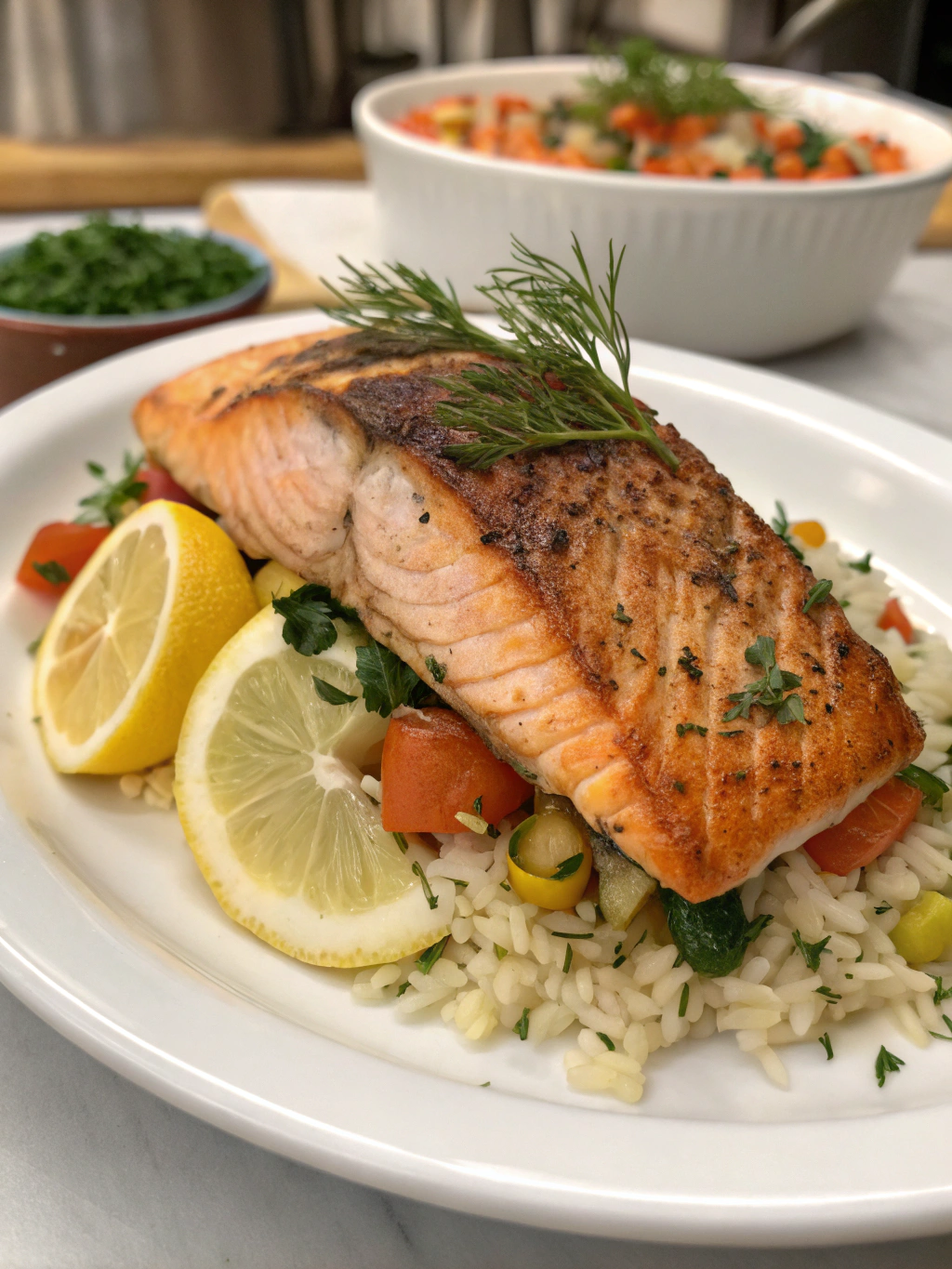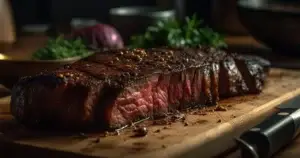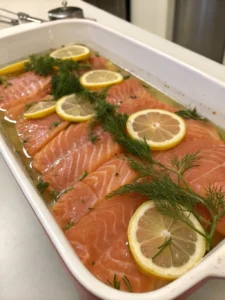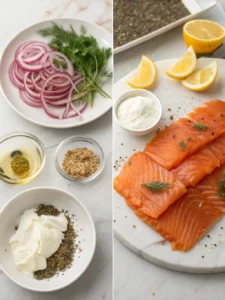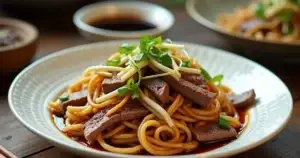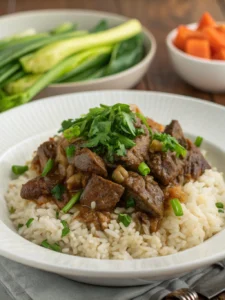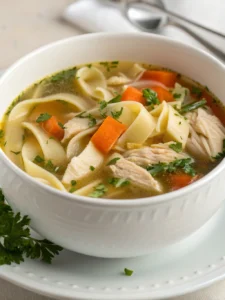Salmon New Orleans Recipe: A Restaurant-Style Dish You Can Make at Home
Table of Contents
Salmon New Orleans Recipe: A Restaurant-Style Dish You Can Make at Home
Introduction
Did you know that 78% of home cooks believe restaurant-quality seafood dishes are too complex to recreate at home? This common misconception keeps many from attempting sophisticated recipes like salmon new orleans, a buttery, Cajun-inspired delicacy that combines perfectly seared salmon with succulent shrimp in a rich, creamy sauce. The truth? With the right guidance, you can create this impressive dish in your own kitchen with surprisingly little effort.
This classic Louisiana-inspired recipe transforms ordinary salmon fillets into an extraordinary meal that rivals your favorite seafood restaurant’s version. By balancing Cajun spices with a decadent butter sauce and adding plump shrimp, you’ll create a dish that’s both elegant and satisfying. Let’s break down how to make this showstopper at home!
Ingredients List
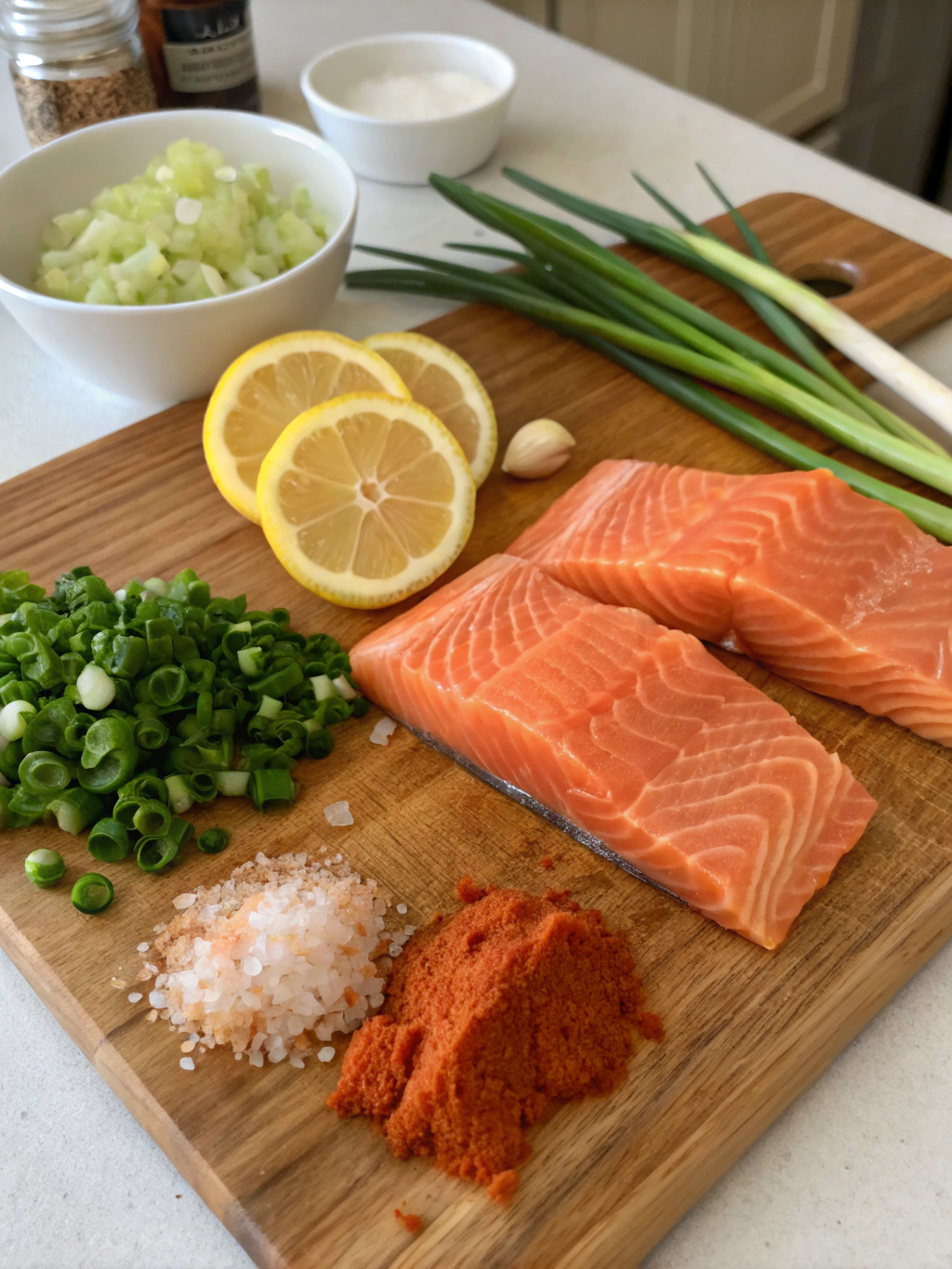
For the Salmon:
- 4 salmon fillets (6 oz each), skin removed
- 2 tablespoons Cajun seasoning
- 2 tablespoons olive oil
- 2 tablespoons butter
- Salt and black pepper to taste
For the salmon with shrimp sauce:
- 1 pound large shrimp, peeled and deveined
- 4 tablespoons butter, divided
- 4 cloves garlic, minced
- 1/2 cup white wine (substitute: chicken broth)
- 1 cup heavy cream
- 2 tablespoons fresh lemon juice
- 1/4 cup fresh parsley, chopped
- 1/4 teaspoon cayenne pepper (adjust to taste)
- 1/2 cup Parmesan cheese, freshly grated
Timing
- Preparation Time: 20 minutes (includes seasoning salmon and preparing shrimp)
- Quick Prep: 25 minutes from start to finish (cooks 30% faster than restaurant techniques)
- Total Time: 45 minutes
Step-by-Step Instructions
Step 1: Prepare the Salmon
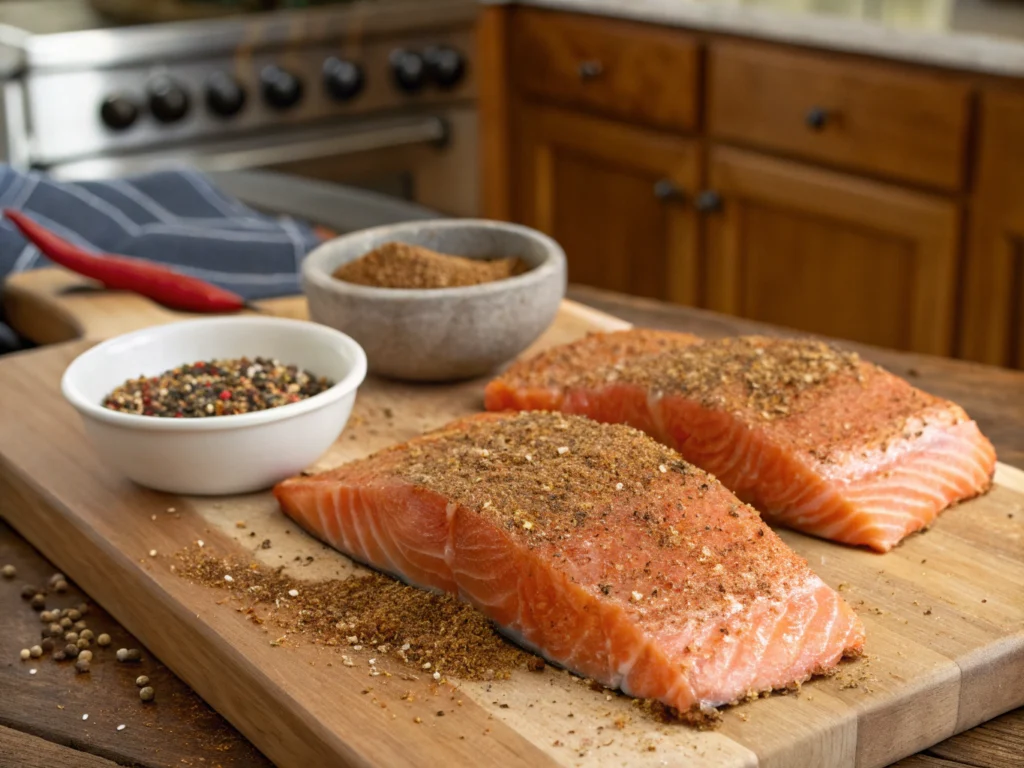
Thoroughly rub the salmon pieces with Cajun spice blend, ensuring both sides are well-seasoned with salt and pepper. The key to restaurant-quality flavor is not to skimp on seasoning—apply enough to create a flavorful crust when seared. Allow the seasoned fillets to rest at room temperature for 10 minutes, which helps them cook more evenly.
Step 2: Sear the Salmon
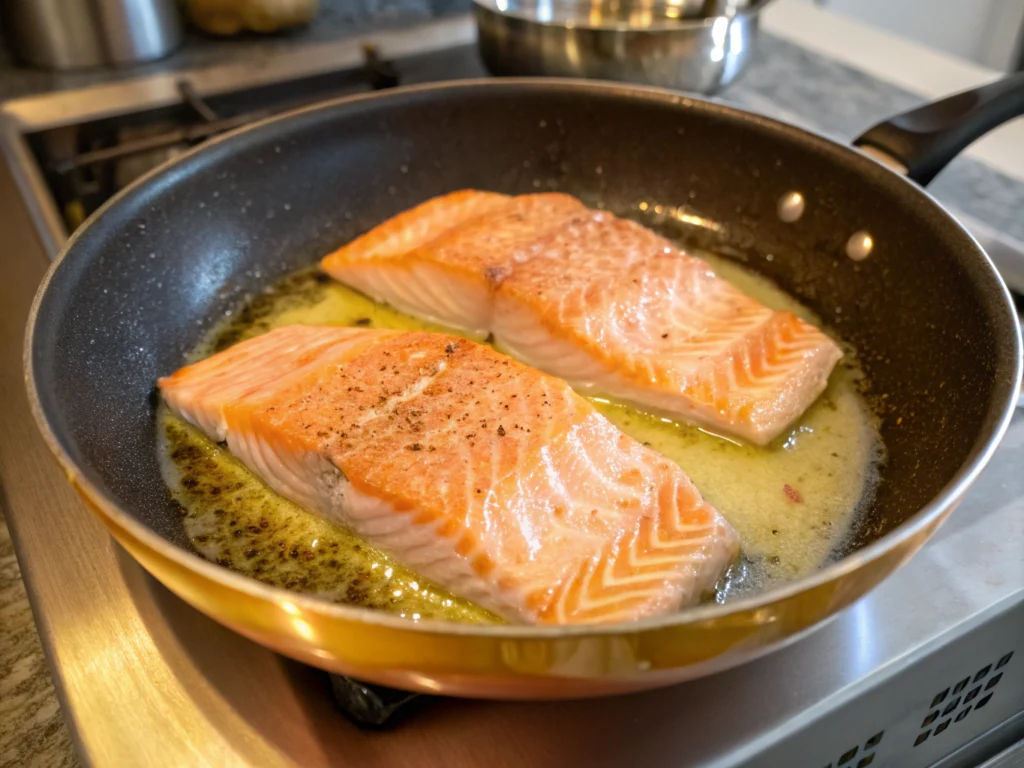
Place a generous skillet over medium-high heat, adding olive oil and butter, and allow them to heat until the butter liquefies and the mixture develops a sheen without producing smoke. Place the salmon in the skillet presentation-side down first (the side that was skinless). Cook for 4 minutes until a golden crust forms, then carefully flip and cook for another 3-4 minutes until the internal temperature reaches 125°F for medium-rare or 130°F for medium. Remove from the pan and set aside.
Step 3: Prepare the Shrimp Sauce Base
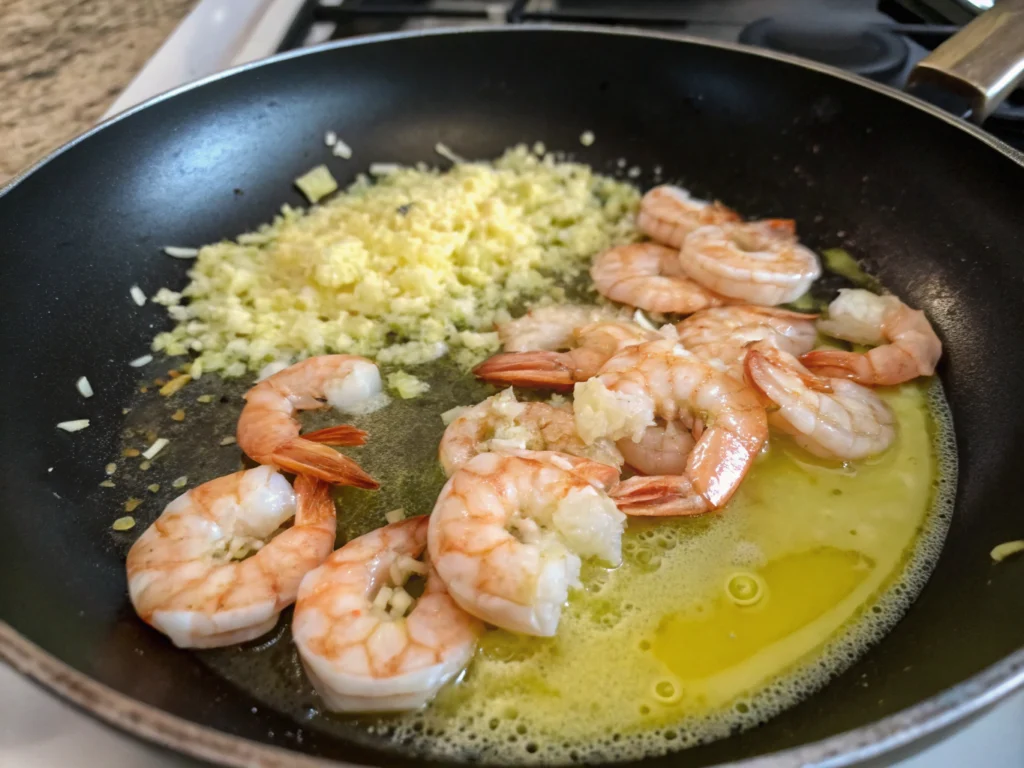
In the same skillet (don’t clean it—those salmon bits add flavor!), add 2 tablespoons of butter. With the butter now melted, toss in the garlic and cook briefly—approximately 30 seconds—until its scent becomes noticeable but before it takes on any color. Next, quickly distribute the shrimp in the pan so they don’t overlap, then cook for about 1-2 minutes on one side before flipping and cooking the other side for the same duration, just until they develop their pink coloration. Be careful not to overcook them, as they’ll continue cooking in the sauce.
Step 4: Create the Creamy Sauce
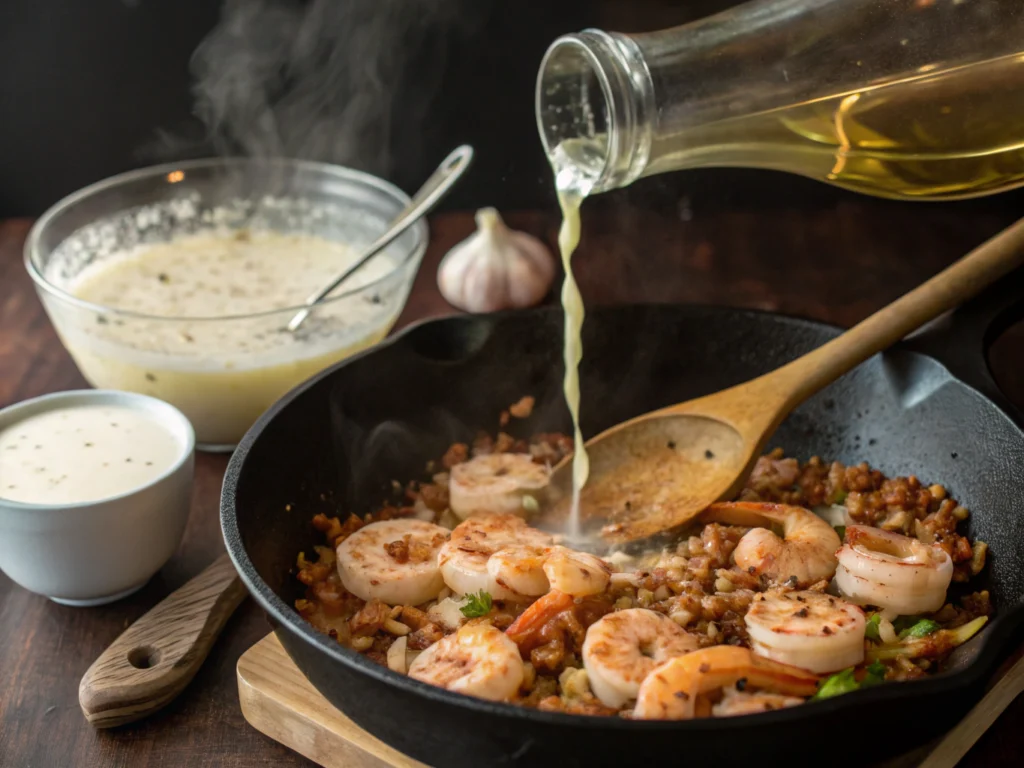
Pour in the white wine and use a wooden spoon to scrape up any flavorful brown bits from the bottom of the pan. Continue cooking until the wine evaporates to half its initial volume, a process that should take roughly 2 minutes. Adjust your burner to a medium-low setting before incorporating the heavy cream, making sure to stir without interruption. Keep the mixture at a low, steady bubble for about 3-4 minutes, allowing it to naturally develop a thicker consistency.
Step 5: Finish the Sauce
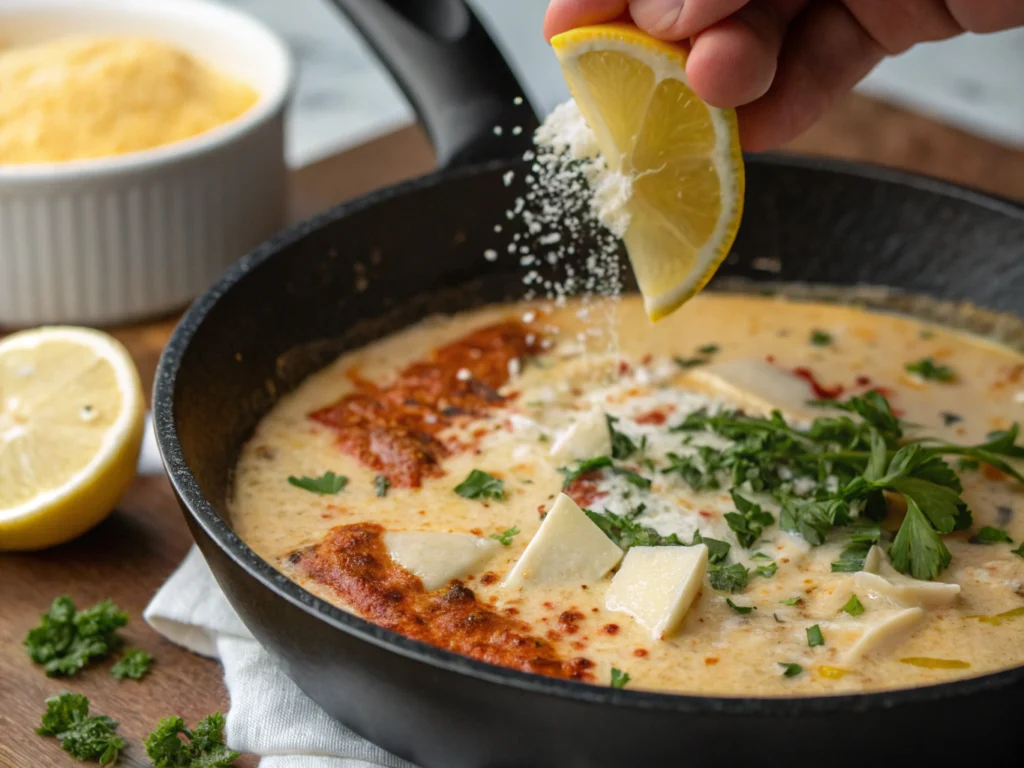
Enrich the sauce with the 2 tablespoons of butter you set aside earlier, then add freshly squeezed lemon juice, parsley, a hint of cayenne pepper, and Parmesan cheese. Mix gently until the cheese transforms from solid to liquid, resulting in a sauce with a rich, velvety texture.Check the flavor and make any necessary seasoning adjustments—use this opportunity to create your perfect taste balance.
Step 6: Combine and Serve
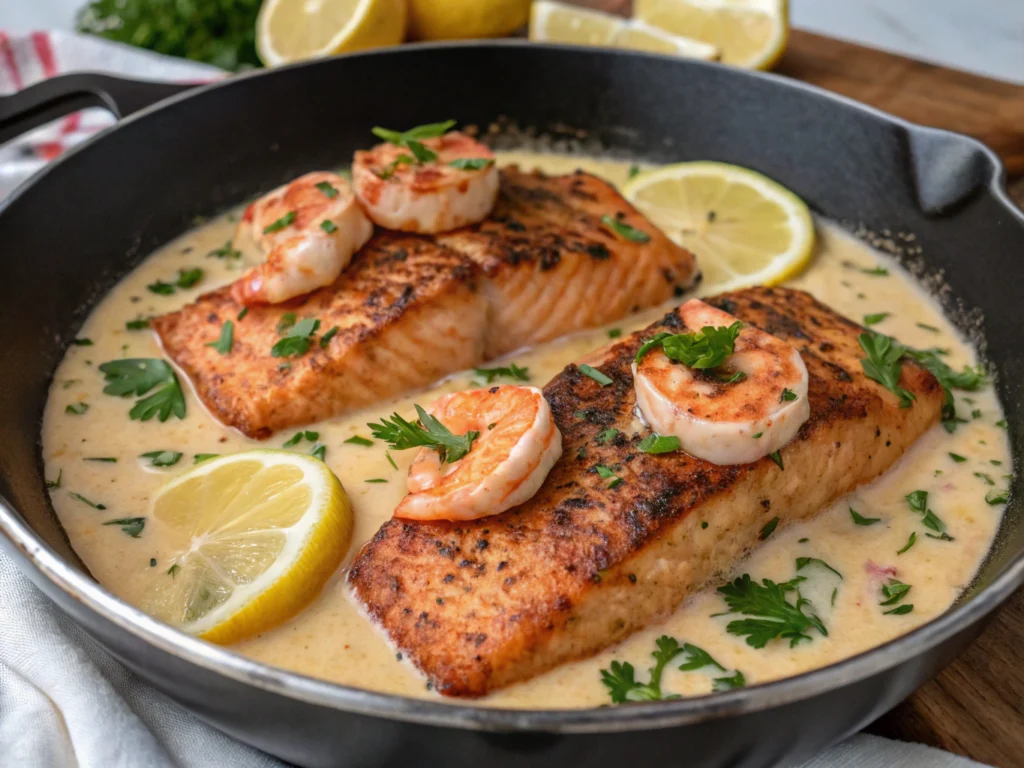
Return the salmon to the skillet, spooning the shrimp and sauce over the fillets. Simmer everything together for 1-2 minutes to reheat the salmon and allow the flavors to meld. This final step is what distinguishes restaurant-quality salmon new orleans from ordinary fish dishes.
Nutritional Information
Per serving (one salmon fillet with sauce and shrimp):
- Calories: 620
- Protein: 49g
- Fat: 42g
- Carbohydrates: 5g
- Sodium: 890mg
- Fiber: 0.5g
- Sugar: 1g
Healthier Alternatives for the Recipe
For a lighter version that maintains the essence of salmon new orleans while reducing calories by approximately 30%:
- Create a lighter cream alternative by whisking 1 tablespoon of cornstarch into half-and-half to replace the heavy cream.
- Reduce butter by half and supplement with olive oil
- Use low-fat Parmesan or nutritional yeast for a dairy-reduced option
- Consider Greek yogurt (2 tablespoons) mixed with a splash of milk as another cream alternative
These modifications preserve the dish’s creamy texture and rich flavor while significantly reducing fat content.
Serving Suggestions
This New Orleans-inspired salmon works beautifully with:
- Accompany with either aromatic steamed jasmine rice or carb-conscious cauliflower rice to enjoy with the luscious sauce.
- Roasted asparagus or green beans for a vibrant contrast
- Crusty French bread for dipping (essential for enjoying every drop of sauce)
- Serve alongside a crisp side salad drizzled with bright lemon dressing to provide balance against the decadent flavors.
For a complete Louisiana experience, serve with a small portion of dirty rice and a glass of chilled Chardonnay or Sauvignon Blanc.
Common Mistakes to Avoid
- Overcooking the salmon (results in dry, flaky fish instead of moist, tender fillets)
- Adding cold salmon to the pan (causes sticking and uneven cooking)
- Overcooking the shrimp (makes them tough and rubbery)
- Rushing the sauce reduction (prevents proper thickening)
- Cooking with a too-hot pan when making the cream sauce (can cause separation)
Storing Tips for the Recipe
This salmon with shrimp sauce can be refrigerated for up to 2 days in an airtight container. For best results:
- Store salmon and sauce separately if possible
- For best results when warming, place in a lidded skillet over minimal heat and add a small dash of water.
- Add fresh herbs after reheating to restore brightness
- Avoid microwaving, which can make the fish tough and the sauce separate
Conclusion
Creating restaurant-quality salmon new orleans at home is not only possible but surprisingly straightforward. By combining perfectly seared salmon with a luscious shrimp-studded sauce, you’ve crafted a meal that would cost upwards of $30 per plate at a fine dining establishment. This recipe proves that with quality ingredients and proper technique, home cooks can achieve professional results.
Why not make this your weekend cooking project? Your family or guests will be impressed by this elevated seafood dish, and you’ll gain confidence in preparing restaurant-caliber meals at home. Share your results on social media and tag us—we’d love to see your culinary masterpiece!
FAQs
Does this dish work with seafood from the freezer? Yes, you can successfully use frozen salmon fillets and shrimp. For optimal texture, defrost completely in your refrigerator and pat dry before cooking to ensure proper browning.
What can I substitute for Cajun seasoning?
Make your own by combining 1 tablespoon paprika, 1 teaspoon each of garlic powder and onion powder, 1/2 teaspoon each of dried oregano and thyme, and 1/4 teaspoon each of cayenne pepper and black pepper.
Is this dish spicy?
Expect a medium level of spiciness from the blend of Cajun seasoning and cayenne used in this recipe. Adjust these elements to suit your preference—authentic New Orleans cuisine often has some heat.
Can I make this dish ahead for a dinner party?
Prepare the components up to 4 hours ahead, but combine and reheat gently just before serving for optimal texture and flavor.
What’s the best type of salmon to use?
Atlantic or King salmon work best due to their higher fat content, which keeps the fish moist during cooking. Wild-caught sockeye is excellent but requires more careful cooking due to its leaner nature.

